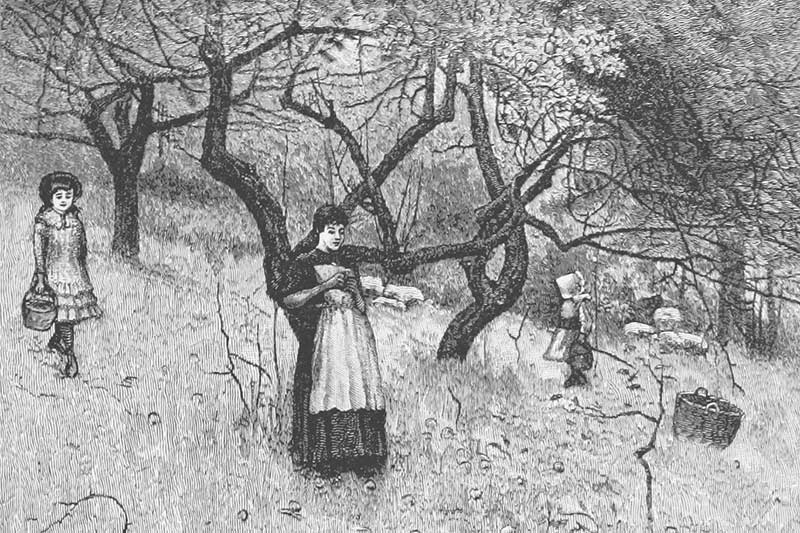
When Hampt in Stoke Climsland was advertised in 1760s-70s it included ‘pound houses [for cider making], apple chambers, a large number of young and established orchards with best cyder fruit trees’, said to be producing 100 hogsheads of cider per year, worth in the region of £50 p.a.
By 1850 White’s Directory noted that the Bere peninsula was ‘producing immense quantities of apples, cherries, strawberries, gooseberries, currants, etc and the finest cider’, one tree at Gawton producing 1000lb of cherries. In 1814, it was reported that Calstock and Stoke Climsland parishes were ‘abound in cherry (mazzard) orchards’.
Much of the fruit was taken down river to the markets in Plymouth and Devonport from
which the navy, among others, bought produce. Towards the end of the century, wagons would arrive during the cherry harvest to collect the fruit bounty for destinations as far afield as Torbay and Penzance.
The development of the railway infrastructure allowed for the fast moving of fruit, and the introduction of a Tavistock and Kelly Bray lines Bray lines, fast transportation links were established. But also saw a trend change. Steamers found a new market in the daytrippers from Plymouth who came up the river tamar to view the cherry blossom or to enjoy fresh-picked strawberries and cream. Also, how early and late fruit could be grown in the warmer climate, meant the likes of Covent Garden market could be supplied with fruits far earlier and later in the year than from other suppliers. Affluent urban society had become the key target customer for the areas market gardens.
After the copper mining collapse, many former miners turned to growing fruit which helped facilitate a boom, and while strawberries were the principal crop, the farmers were mindful that the plants needed to be renewed every seven to ten years and that it was unwise to place ‘all their fruit in one punnet’. Agriculture statistics from 1876 and 1891 in east Cornwall included growing:
Grapes
Currants
Gooseberries
Raspberries
Strawberries
Mulberry
Figs
Plums
Walnuts
Chestnuts
Cherries*
Daffodils
Daffodil bulbs
*Cherries, however, had not penetrated markets beyond Devon and Cornwall and so had not increased, most likely due to their inconsistent crop and difficulties in harvesting. Despite this, the Cherry was very important in and around the parish, and still to this day Cherry fairs and feasts which were established in the 1800s continue annually.
Even after WW1, fruit and orchard production continued to thrive, with a survey between Stoke Climsland and Botus Flemming showing nearly 2000 acres still being dedicated to the harvest.
However, the main turning point was WW2. 25% of land for flower cultivation went to food production, and many in the locality went further. Replacing the once abundant strawberries, raspberries and other fruits with potatoes for the war effort. By the 1960s, the railway branch lines had ceased, tree crops were insignificant, and the farmers were offered £100 per acre to destroy their orchards.
Today
All is not lost. While we no longer have the thriving orchards and fruit farming of yesteryear, there are dedicated people who are doing everything they can to save the local species of fruits and trees which were so popular in the 1800s. There are dedicated organisations who are protecting those species, as well as local growers trying to re-establish them, such as James Evans and Mary Martin.
If you’d like to start growing fruit locally, why not check out the list of endangered Cornish fruit trees here, and where you can buy them.
